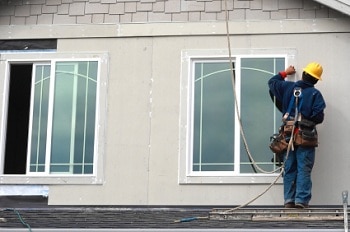Top 3 Myths About Replacing vs. Repairing Original Windows in Older Homes
 America is on an energy-efficiency kick these days, and it only makes sense. After all, there are plenty of ways to spend a few bucks to significantly cut energy costs. However, when it comes to older or historic homes, there usually isn’t a one-size-fits-all solution for energy efficiency, especially when it comes to replacement windows.
America is on an energy-efficiency kick these days, and it only makes sense. After all, there are plenty of ways to spend a few bucks to significantly cut energy costs. However, when it comes to older or historic homes, there usually isn’t a one-size-fits-all solution for energy efficiency, especially when it comes to replacement windows.
According to experts, many of the claims about the benefits of replacement windows over old or original wood-framed windows just don’t bear out. If you’re thinking about changing out the windows in your old home, here’s the inside scoop on the top three myths about replacement windows.
Myth #1: Replacement windows help you save money
All you need to dispel the No. 1 myth about replacing original wood-framed windows in older homes is a little math.
When properly installed, modern replacement windows in an average home with 24 to 30 windows can save you about $50 a month on heating or cooling bills. However, at $500 to $1,000 per replacement window, you could easily spend $12,000 to replace all your windows. In an average home that’s heated or cooled six months out of the year, that comes to about $300 in annual savings.
At that rate, it could take you 40 years to recoup your investment in the windows, far longer than the average homeowner stays in one house, which is between about five to seven years. And in some cases, you’ll never recoup your investment, no matter how long you stay in your home. In an extreme case detailed in a 2007 report by Keith Haberern, a licensed architect and engineer and the chairman of the Collingswood Historic District Commission in New Jersey, the payback time for replacing a single-pane storm window with a Low-E insulated glass window was calculated at 222 years.
An additional concern is that modern vinyl, aluminum, fiberglass, and composite windows only last about 20 years, with a third of them failing within 10 years. The fact is, it’s virtually impossible to recoup the amount of money spent on replacing old wood windows with new windows before the new windows need to be replaced.
Myth #2: Replacement windows don’t need to be maintained
Although replacement windows may be easier to clean, they aren’t exactly ‘maintenance free’ in the way you might think. In fact, they can’t be maintained or repaired at all. While traditional wood windows are composed of interlocking parts made from natural materials each of which can be maintained, repaired or replaced modern vinyl, aluminum, fiberglass and composite windows are manufactured as a unit and the individual components can’t be repaired. When a part fails, the entire unit must be replaced, typically at somewhere between $500 and $1,000 a window.
Myth #3: Replacement windows are guaranteed
While many replacement window companies offer certain money-saving guarantees on their windows, you need to make sure to read the fine print. Some companies guarantee that you’ll save 40 or 50 percent on your heating and cooling costs with replacement windows. But there are two major problems with guarantees like this:
- First, if you read the fine print, you’ll discover that there’s usually a cap (often around $500) that the company will refund you if you don’t get the kind of energy savings they guarantee. Of course, after having spent thousands of dollars to replace your windows, the guarantee doesn’t match your investment.
- Second, the fine print of energy-saving guarantees usually make specific claims about things such as heat loss through windows, not overall household energy savings. However, since only about 10 percent of hearing loss in a building occurs through windows while 90 percent escapes through roofs, walls, floors and chimneys a 50-percent-off savings guarantee really means only about five percent savings off your heating bills.
Unfortunately, claims that you’ll save energy and money by replacing your old wood-framed windows with modern, energy-efficient windows are often little more than marketing and sales pitches. If you’re thinking of getting replacement windows for your old home, do your research, read the fine print, and get everything in writing. Often times, you’ll find that repairing your windows and sealing them properly while addressing energy loss through other areas is a better idea when it comes to short-term spending and long-term savings.
Sources
National Trust for Historic Preservation, Weatherization Tips & Strategies.
The Old House Guy, The Truth about Windows Historic Wood Windows & Storm Windows vs. Replacement Windows.
Traditional Building, The Right Thing.
Utah State History, Windows: Your Questions Answered.



